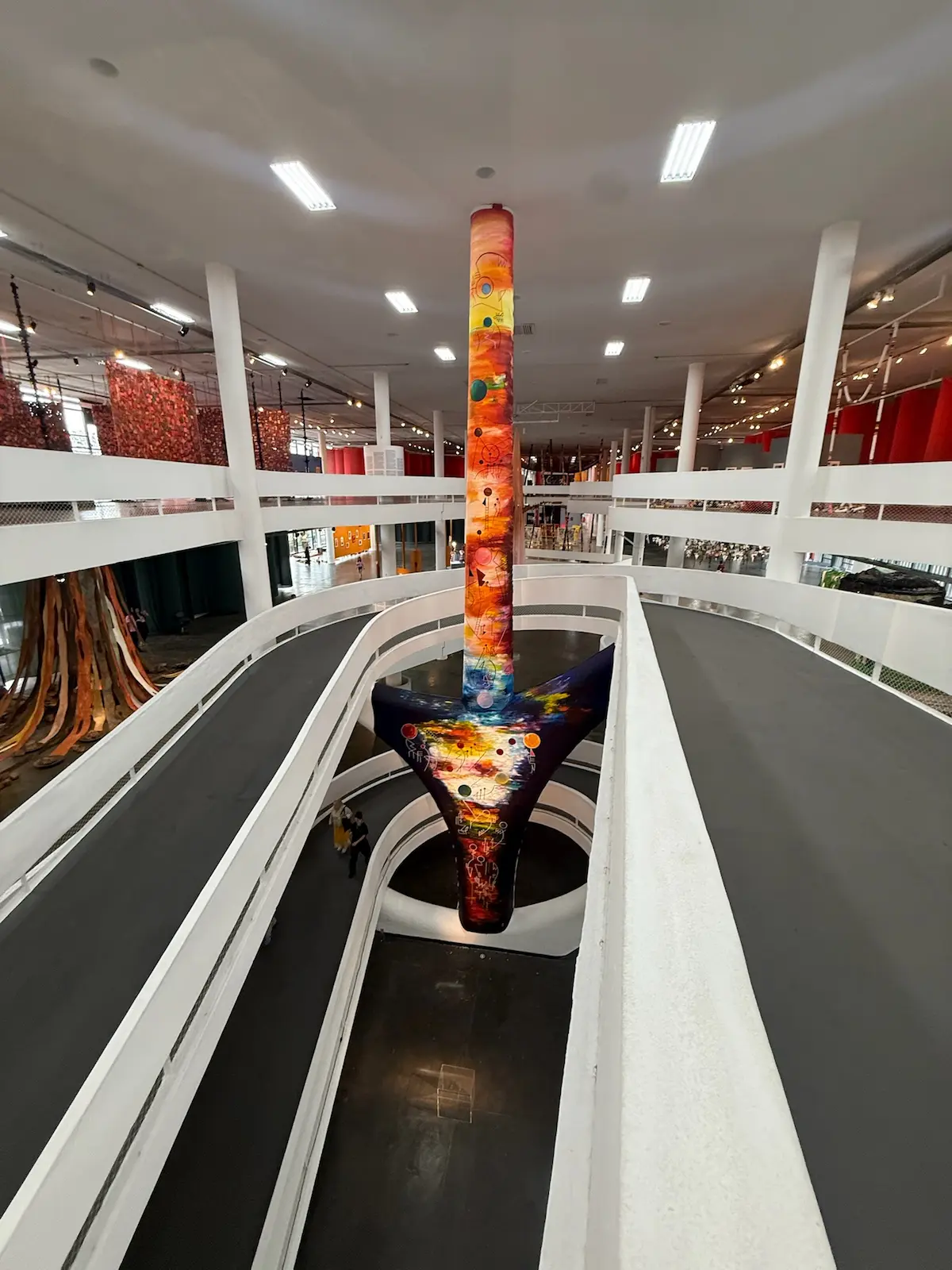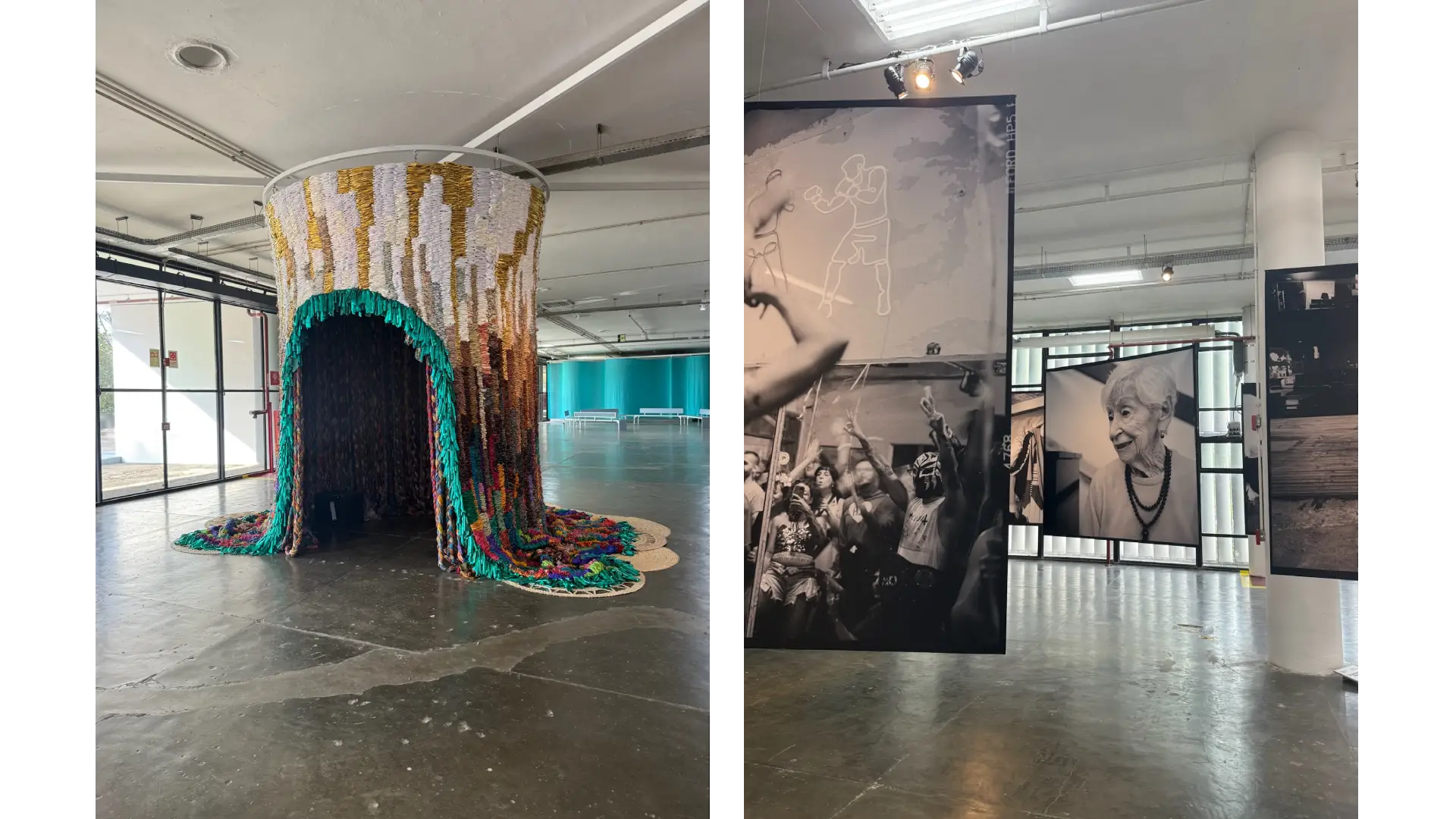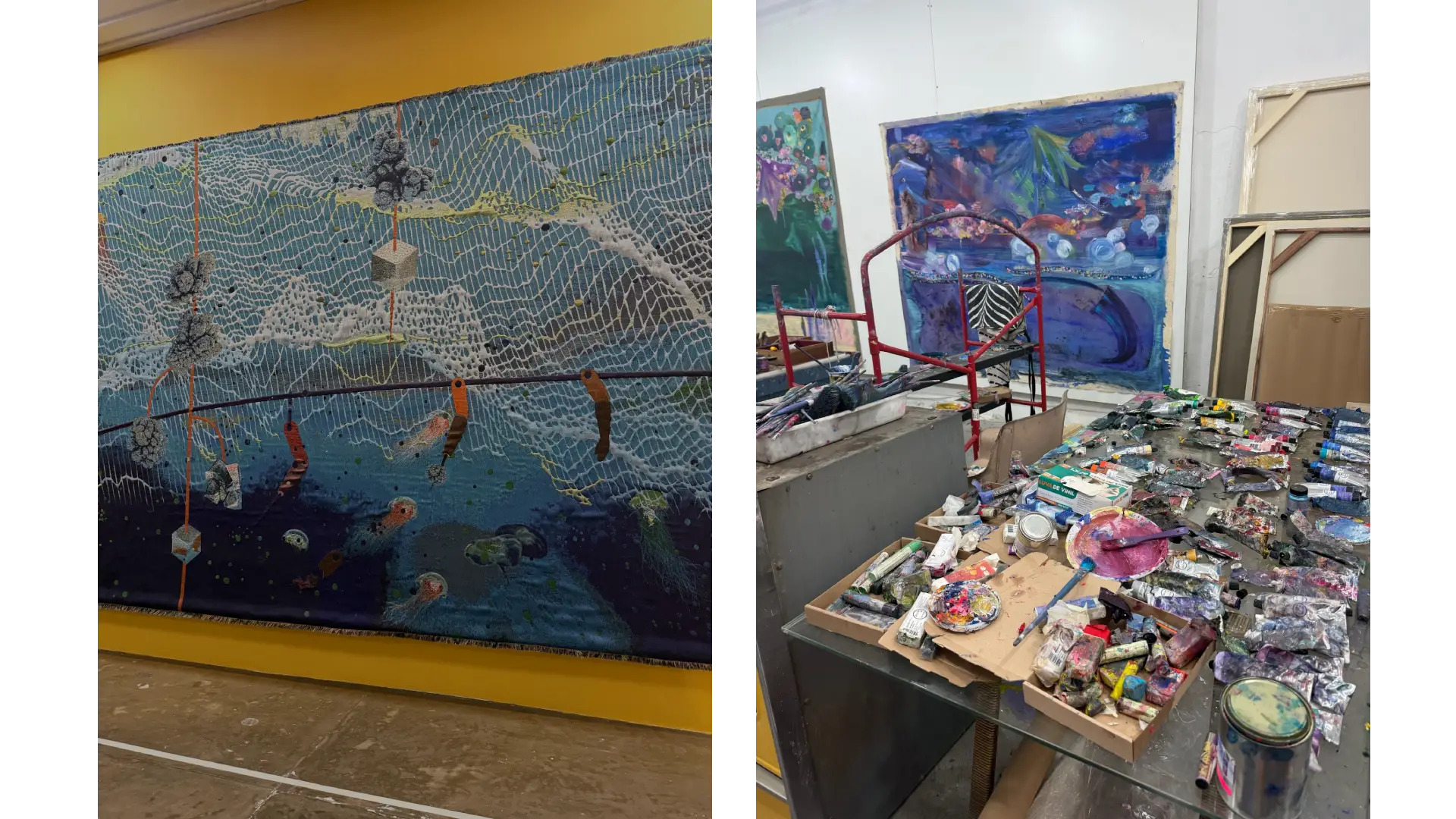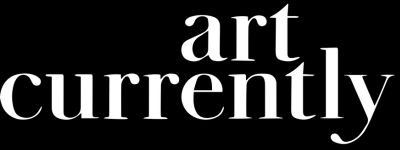In Reflection of São Paulo’s 36th Biennial Where Radical Silence Persists Through the Noise

Silence is not a state we associate with biennial openings; beyond clinking glasses and the throb of DJ systems, there is the chatter: friends, acquaintances, peers, rivals, and the general art-world clique clashing and converging in these tributary gatherings. And yet, silence—in all its resonance—wove a narrative thread through Bonaventure Soh Bejeng Ndikung’s 36th São Paulo Biennial, which took its title from Brazilian poet Conceição Evaristo's poem Da calma e do silêncio (On calm and silence). Through the poet’s words, Ndikung invited us to explore “the submerged worlds that only the silence of poetry penetrates.”
In an age of hyper-communication, the observation that silence and emptiness are increasingly overlooked is a platitude, however, finding myself at the last-minute on a solitary trip to São Paulo, it offered an unexpected immersion in its practice. Listening to its rhythms opened new ways of experiencing Ndikung’s curatorial vision and the city itself; as Jacques Attali wrote in his essay ‘Noise: The Political Economy of Music’ (and quoted in the Biennial’s own catalogue) ‘for twenty five centuries, Western knowledge has tried to look upon the world. It has failed to understand the world is not for the beholding. It is for hearing.’
São Paulo, the southern hemisphere’s largest metropolis, is a place where nature erupts through concrete. The only night I failed to sleep—a rarity for me—was not disturbed by engines or late-night revelers, but by the persistent singing of a bird in an adjacent derelict car park. That same quality of nature’s insistent resilience against the urban (and human) permeated the Biennial. Perhaps most literally in Precious Okoyomon’s entry piece Sun of Consciousness. God Blow Thru Me - Love Break Me (2025), a fertile installation/intervention within the Biennial’s pavilion, steeped in the smell of soil and against a backdrop of birdsong. Providing a place of rest and reflection, Okoyomon’s work also explored the concept of ‘chaos’ as a ground for generative, fruitful creation.
Ndikung points to Brazilian locations like Recife as points of inspiration for this biennial - a city emerging from violence and destruction into a place of “intractable, adamant beauty”. Frequently throughout, we are confronted by works of beauty springing from decay - or the discarded - as in Moffat Takadiwa’s bottle top assemblage ‘Portals to Submerged Worlds’ or Suchitra Mattai’s woven textiles. The overall effect is Darwinian in some senses, but filtered through the beats of Brazil’s manguebeat culture and the glitch of digital evolution. Mangue bit - or "mud beat” - Brazil’s cultural movement founded itself in Recife, provides a rich starting point for many of the works on show, which connect local cultures with global technologies and concepts. The movement's aesthetic - also known as the "Crabs with Brains" - celebrates not only the idea of flourishing despite resistance and hardship, but also a dedication to avoiding tackling life linearly - crabbing into new ways of confronting the world in front of us.
In the ‘chapter’ titled ‘The Intractable Beauty of the World’, abstract works by Sir Frank Bowling and Brazil’s Aislan Pankararu hummed vividly in their quiet brilliance. They reflected the country's wider art historical legacy with color - a heritage held up by contemporary artists working with chromatic language in São Paulo today. A quick visit to nearby studios from the likes of artists such as Thalita Hamaoui and Diambe, underlined the continuance of colour practices across the bustling city. Cuban artist Maria Magdalena Campos-Pons’ multidisciplinary installation “Those Who Were, Will Be Here” - drawing on her ancestral roots in Santeria practices; offering a space for collective reflections on spirituality and wisdom - was for me one of the most beautiful and sensitive uses of color and artistry throughout the Biennial.
Yet the exhibition was not a retreat into beauty for beauty’s sake, and alongside this reverie for reflection and silence, was a celebration of the resonance of music and the power of voice. From the rigor of Forensic Architecture / Forensis’ project Delta-Delta: People’s Court I, to Gê Viana’s sonic soundsystems, alongside a cacophony of spoken word, performance and audio works - the exhibition showed that resistance through the spoken word is palpable, when utilized effectively. This was reaffirmed for me in an artwork actually hosted as part of MASP’s concurrent "Histories of Ecology" exhibition opening the same week. Curated by André Mesquita and Isabella Rjeille, it explored diverse, plural, and polyphonic histories of the natural world. Walking through, I was (again) transfixed by the now viral footage of Hana-Rawhiti Maipi-Clarke performing the traditional haka in New Zealand's Parliament last year; a protest against a proposed bill that would redefine the country's relationship with its Indigenous people and lands. Though I could not understand the words, the intent was unmistakable, made powerful by its raw vocal force.

It returned me to a personal moment many years earlier: the Cameroonian curator Koyo Kouoh’s gesture at the opening of Limerick’s EVA Biennial in 2016 - with a catalogue printed in both English and Gaeilge. Today, perhaps a less stunning decision, but at the time, it felt revelatory. I held a language used by my ancestors and - without words - it spoke to me. Kouoh was in no doubt a traveller of this world - someone who understood it was ‘for the hearing’. It is of course no small coincidence that Kouoh, as much through her absence, felt profoundly present for me - we were at her close friend’s Biennial, and the resonance of her own curatorial riffs were deafening throughout.
Ndikung’s call for silence - but more than that, to listen even if not understanding - felt like the musical rest we needed right now, in a world where speech can feel at best, cheap, and at worst - atrophied. Through his Biennial - where he implored us to ‘imagine a world in which we emphasize our humanities, at a time when humanity is literally failing us’ you could - if you listened hard enough - perceive the pause, that sharp intake of breath, the off-beat that exists just before a new riff begins. I look forward to hearing where Kouoh’s own minor keys might take this melody next.


